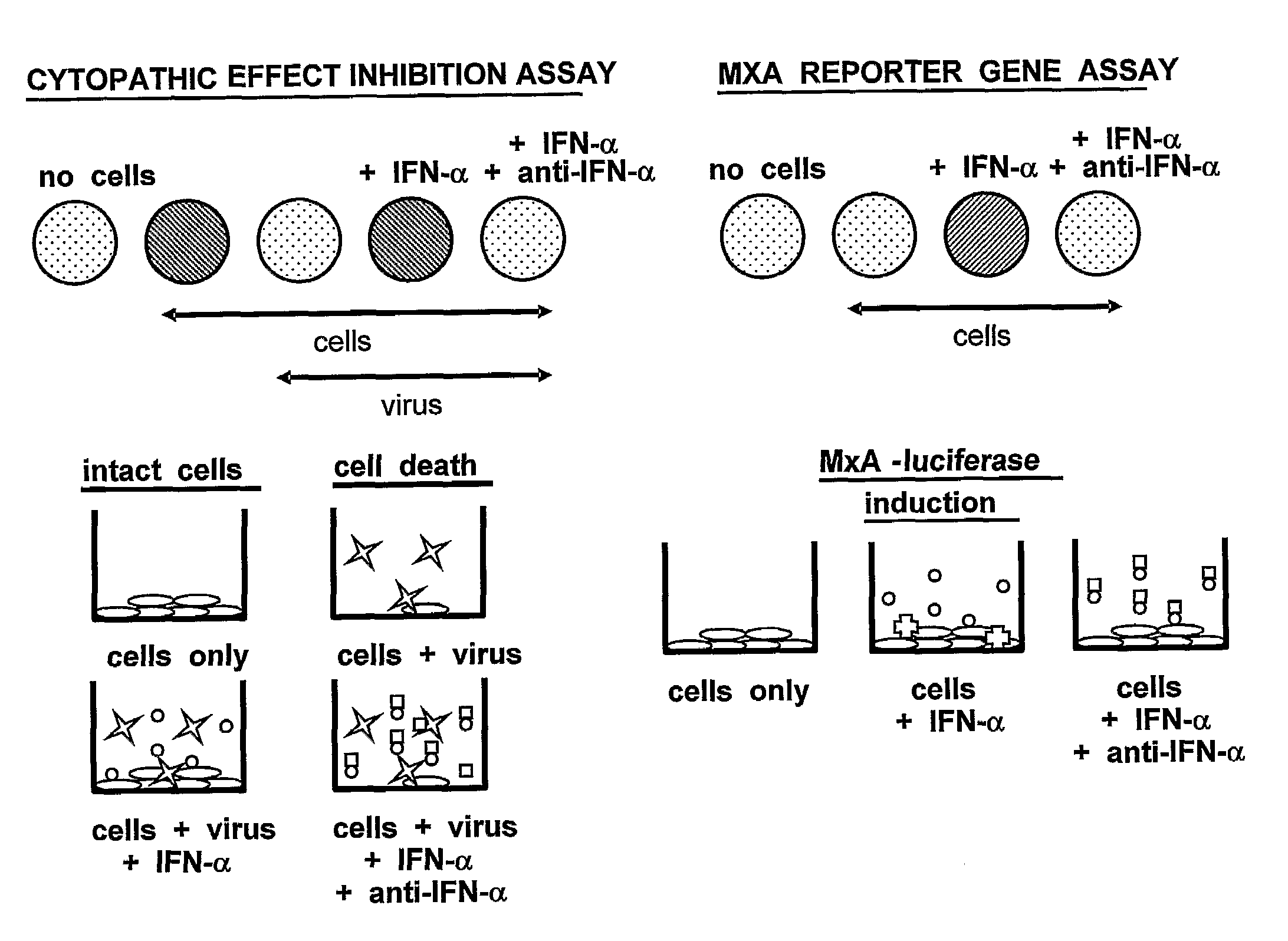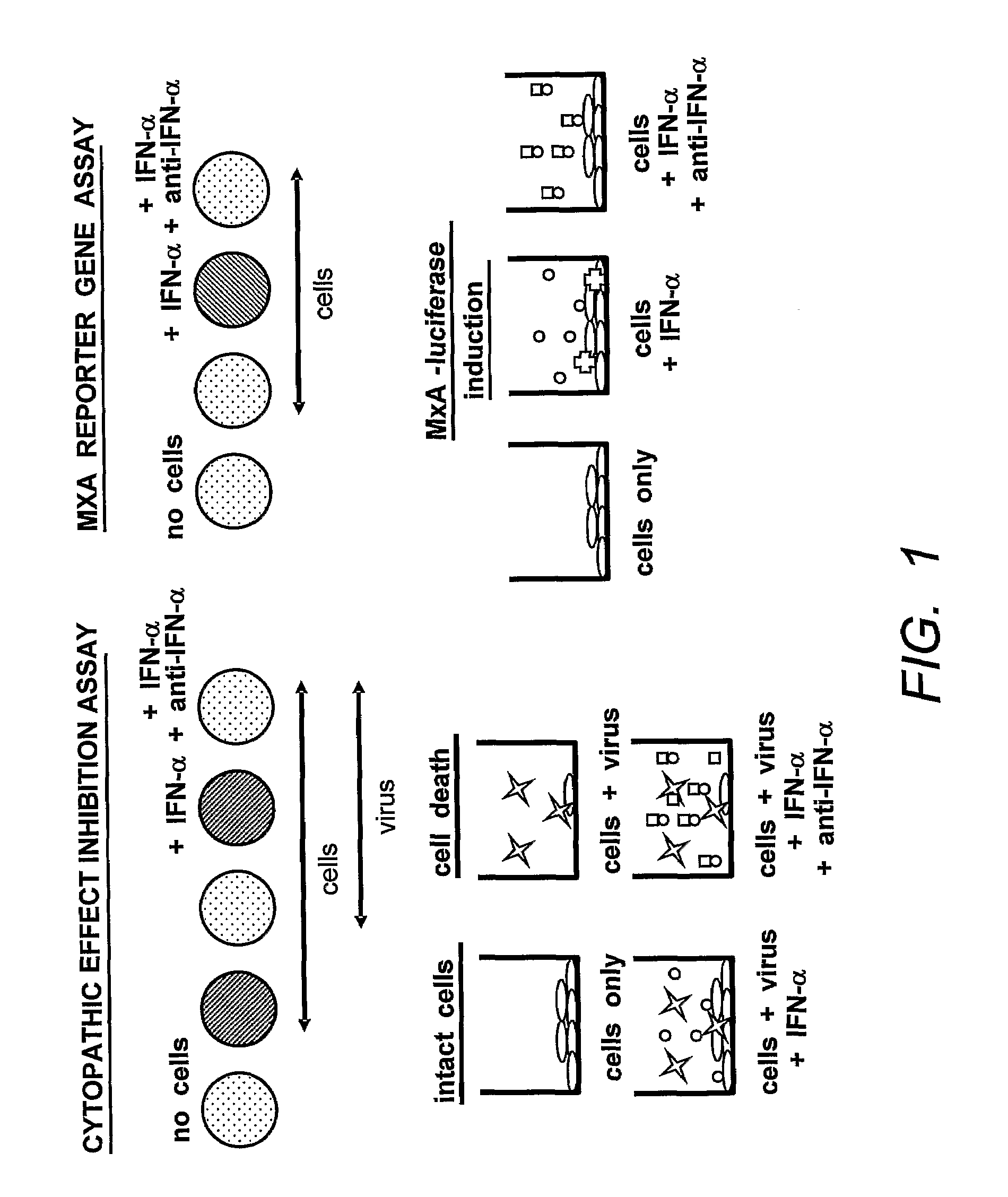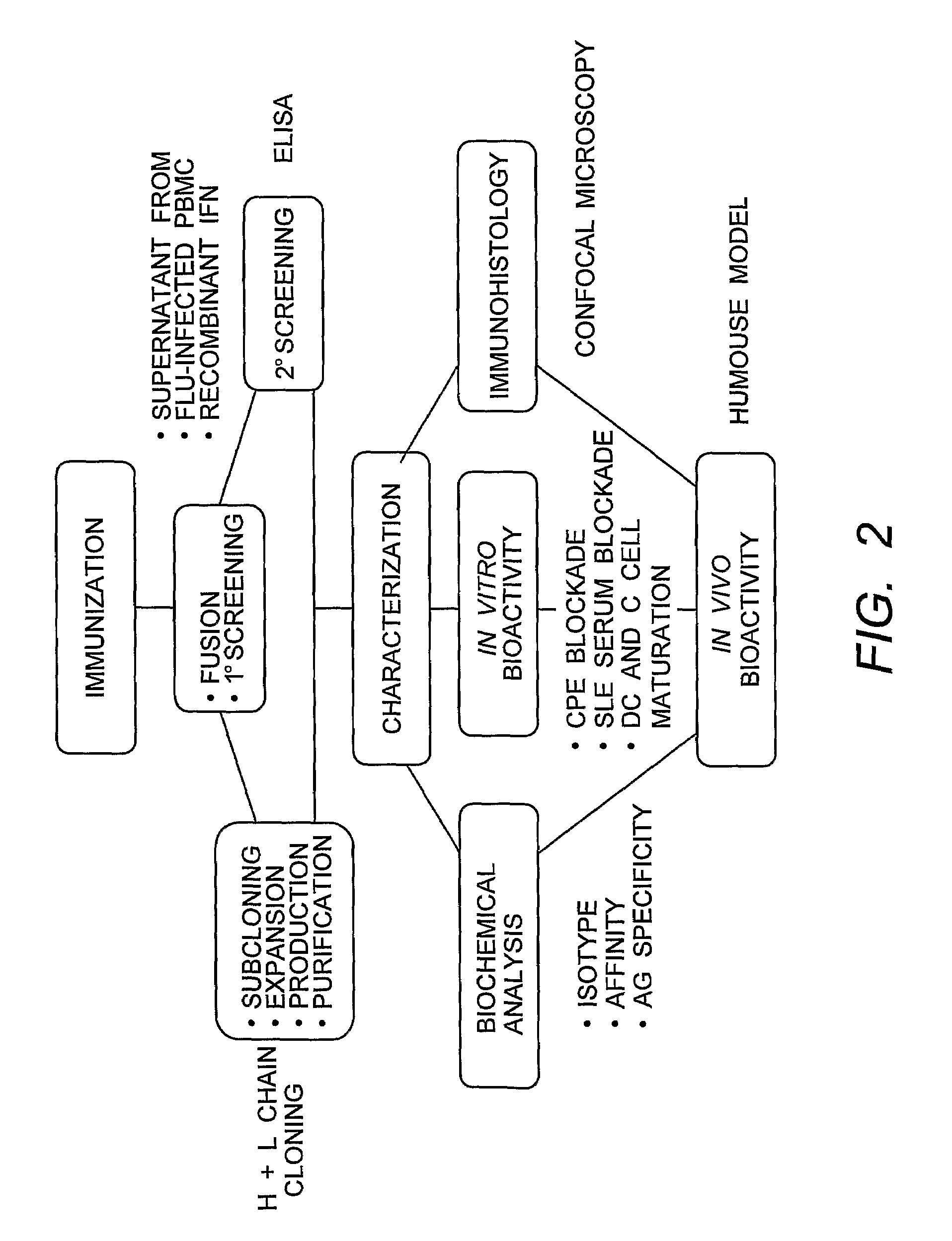Anti-Interferon Alpha Monoclonal Antibodies and Methods for Use
a monoclonal antibody and interferon technology, applied in the field of anti-interferon alpha monoclonal antibodies and methods for use, can solve the problems of autoimmune disease development, no new sle treatment therapy has been approved in 40 years, and the physiological significance of individual subtypes and their synergistic or antagonist activities in vivo remain undefined, etc., to improve the symptoms of ifn related disorders, diagnose, treat and/or improve the effect of symptoms
- Summary
- Abstract
- Description
- Claims
- Application Information
AI Technical Summary
Benefits of technology
Problems solved by technology
Method used
Image
Examples
example 1
[0198]Immunization and Selection of Monoclonal Antibody Cell Lines. A flow chart of the IFNα MAb development scheme is shown in FIG. 2. Groups of five 6-8 week old Balb / c female mice (Harlan) were immunized with 5-10 μg each natural leukocyte IFNα (I-2396, Lot #111K1603, Sigma) and / or a cocktail of recombinant proteins (5-10 μg each of the three recombinant IFN α subtypes A, B2, and F (obtained from PBL Biomedical Laboratories “PBL”)) in MPL®+TDM emulsion (Sigma #M6536) at two to three week intervals according to the schedules indicated in Table 1, below. The MPL®+TDM emulsion is a Ribi Adjuvant system consisting of monophosphoryl-lipid A (MPL: detoxified endotoxin from S. Minnesota) and trehalose dicorynomycolate (TDM) in a 2% oil (squalene)-Tween 80-water emulsion. Antigen was administered via intraperitoneal (i.p.) or subcutaneous (s.c.) routes. Pre-fusion screening of serum collected from the mice was done at three titers (1:200, 1:2000, and 1:20,000) using the reporter gene (RG...
example 2
[0200]Neutralization of commercially-available leukocyte IFNα or PBMC-flu supernatant bioactivity by ACO-1, ACO-2, ACO-3, ACO-4 and ACO-5. The anti-IFN-α MAbs shown to strongly bind and neutralize at least one IFN-α subtype were selected to examine their abilities to neutralize naturally-derived IFN preparations, which are known to contain a broad variety of IFN-α subtypes. For these studies, ACO-1 through 5 were titrated in the RG bioassay against both commercially-available leukocyte IFN and PBMC-flu supernatant prepared as describe above. ACO-1, 2, and 3 blocked leukocyte IFN bioactivity by at least 50% at all three MAb amounts tested (200, 20, and 2 ng) (FIG. 3a); ACO-4 achieved slightly more than 50% neutralization only when 200 ng was tested. In comparison, ACO-5 performed poorly against leukocyte IFN, maximally blocking less than 10% of the assay signal.
[0201]Comparative inhibition of various dilutions of PBMC-flu supernatant by defined concentrations of the monoclonal antibo...
example 3
[0202]Inhibition of recombinant IFNα subtype bioactivity by ACO-1, ACO-2 ACO-3, ACO-4, ACO-5, ACO-6 and ACO-8. The IFNα-neutralizing candidates ACO-1 through 6 and ACO-8 were screened by both the RG assay as well as the traditional cytopathic effect (CPE) inhibition assay for neutralization of 15 recombinant IFNα subtypes as well as for neutralization of IFNβ. Recombinant IFN-α subtype proteins were obtained from PBL Biomedical Laboratories (Piscataway, N.J.); info@interferonsource.com, hereinafter “PBL”). The specific activities, as determined by the manufacturer, are shown in Table 3.
TABLE 3Recombinant human IFN-α subtypes employed in the antibody characterizations.IFNαProteinSpecificsubtypeactivityProductLot #RGmaxRG plateauRG middleCPE plateauCPE middle(gene)(U / mg)# (PBL)(PBL)Units(pg of IFN)(pg of IFN)(pg of IFN)(pg of IFN)A (2a)3.8 × 10811100-1216747.512562.550252 (2b)2.77 × 108 11105-121228.3130152512.5B2 (8)4.63 × 108 11115-121683.78552.5C (10)2.31 × 108 11120-121183.4715452...
PUM
| Property | Measurement | Unit |
|---|---|---|
| Fraction | aaaaa | aaaaa |
| Fraction | aaaaa | aaaaa |
| Fraction | aaaaa | aaaaa |
Abstract
Description
Claims
Application Information
 Login to View More
Login to View More - R&D
- Intellectual Property
- Life Sciences
- Materials
- Tech Scout
- Unparalleled Data Quality
- Higher Quality Content
- 60% Fewer Hallucinations
Browse by: Latest US Patents, China's latest patents, Technical Efficacy Thesaurus, Application Domain, Technology Topic, Popular Technical Reports.
© 2025 PatSnap. All rights reserved.Legal|Privacy policy|Modern Slavery Act Transparency Statement|Sitemap|About US| Contact US: help@patsnap.com



